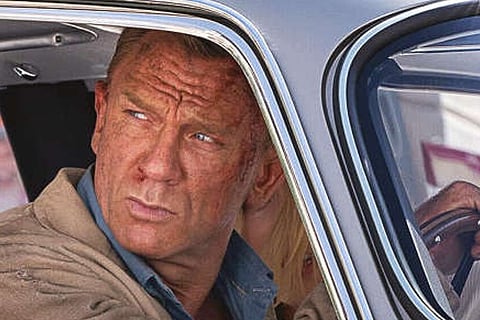

Beijing
Shanghai and Macao were brief backdrops, and one villain had been tortured, offstage and in the past, by Chinese security forces — but overall, a series released across the years of China’s rise gave little hint that America’s leading rival mattered any more than any other exotic Bondian locale.
In fairness, the Cold War-era Bond movies were not obsessed with Russia, serving up stateless supervillains rather than Soviet adversaries in many of his outings. But the reality of Russian power was part of the fabric of the series. The same actor showed up as the head of the KGB, for instance, in five Bond movies in the 1970s and ’80s. China’s absence from Bondworld is part of a general absence in American cinema. Out of fear of losing the Chinese market and amid the aggressive use of commercial soft power by Beijing, in the almost quarter-century since Brad Pitt’s “Seven Years in Tibet” and Richard Gere’s “Red Corner,” no major Hollywood release has portrayed the communist regime in a substantially negative light. Or just as often, as in the Craig movies, it barely appears at all. The Asian pop culture that has increasing influence on America is mostly Korean and Japanese, while China — despite all its power, despite our economic intertwinement, despite its crucial role in our political and now our public health debates — remains more a domain for experts, its internal life and culture more distant and opaque.
As a consequence, its relationship to American ideological debates is fluid, fraught and strange. Things were simpler 15 years ago, when openness to China — a politics of commercial exchange, with the expectation of China’s liberalisation and occasional envy for its apparent technocratic competence — was the default establishment position. But as it became clear that the opening to China was not leading to political liberalisation, and as its socioeconomic costs to the American heartland became clear as well, there was an ideological scrambling that hasn’t ended yet.
On the left now, you see several impulses. There is an irrelevant but fascinating fringe of very online “tankies” — a reference to the communists who justified the USSR sending in the tanks to Hungary — actively championing the Beijing regime. There is a Bernie Sanders left that wants to critique the Chinese regime on trade and human rights but fears anything that seems like warmongering. And there is a left that thinks the existential stakes of climate change require deep cooperation with Beijing.
The center, meanwhile, has lost its optimism about China turning into a democracy. But it’s not sure whether to pivot to confrontation and try to disentangle our economies, or whether globalisation makes that disentanglement impossible, and so we need, with whatever nose-holding, to deepen ties instead. The right includes several tendencies as well. There’s a Cold War 2.0 mentality, which fears China as a sweeping ideological threat, a fusion of old-model communism with 21st-century surveillance tech that promises to make totalitarianism great again. Americans have never exactly excelled at understanding other societies. But Hollywood’s supine attitude toward Chinese power is a useful window into a larger problem: We need to see our great 21st-century rival clearly, and too often we see only through a glass darkly, if at all.
Visit news.dtnext.in to explore our interactive epaper!
Download the DT Next app for more exciting features!
Click here for iOS
Click here for Android